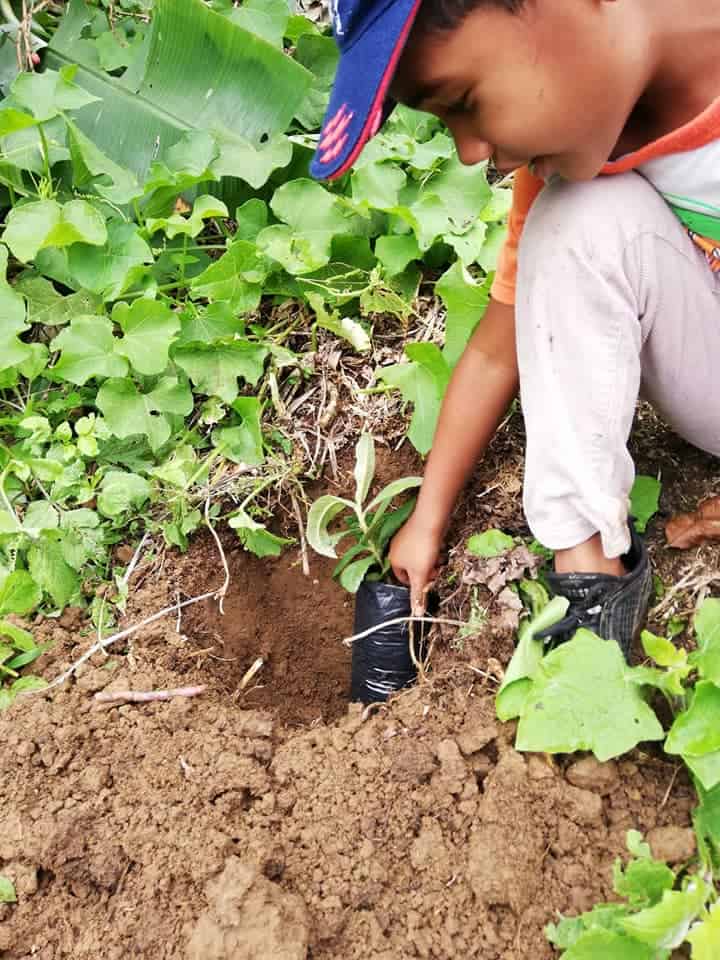It’s not often these days that there is good news about climate change. So when a recent study suggested that establishing a trillion new trees around the world could turn back the climate clock to the 1970’s, it landed like a bombshell in the scientific community. Researchers analyzing satellite data calculated about 2.2 billion acres of available land around the world that could be converted into forest cover, capturing 205 gigatonnes of CO2. This could bring down atmospheric levels by twenty five percent.
Prof. Thomas Crowther who co-authored the research said, “We all knew that restoring forests could play a part in tackling climate change, but we didn’t really know how big the impact would be. Our study shows clearly that forest restoration is the best climate change solution available today.”
That’s a big statement — one that got the whole world got excited to run out and plant trees. Hell, it even became an election platform.
But there are many challenges with planning landscape-level projects decades into the future, especially as climate change alters local growing conditions. And unless the underlying causes of past deforestation are addressed, any new trees planted may suffer the same fate as the ones they are replacing.
So before we all stick shovels in the ground, we decided to take a look at some examples of resilient reforestation efforts and why they worked.
Kenya: The Green Belt Movement
When Wangari Maathai walked into Ministry of Forests office in 1977 seeking seedlings so that rural women could restore Kenyan forests, the disbelieving director laughed in her face. Inviting her to take all the trees she wanted, he had to withdraw the offer within a year because Maathai and her local teams were planting so many.
Maathai’s Green Belt Movement mobilized community concern that streams were drying up, food sources were less secure and that women had to walk farther to get firewood for cooking. Planting trees was only part of a larger effort to make life more prosperous and fair, including seminars on the underlying causes of poverty and gender injustice. Maathai did not just plant trees, she planted ideas.

Maathai passed away in 2011 but her organization has so far planted 51 million trees and remains a model for reforestation efforts that avoid the many pitfalls often associated with large afforestation efforts.
What can we learn from Maathai’s movement? For starters, local women lead these projects, ensuring that seedlings are not abandoned after planting. By having communities invested in the success of new forests there is less danger of them simply being cut down when they are large enough to make money from.
Participants are taught how to build more fuel-efficient wood stoves for cooking to reduce the demand on local forests and avoid destructive practices such as cutting an entire tree for firewood rather than just harvesting branches. Workshops on water harvesting and conservation farming techniques help instill an ethos of forest conservation.
Poverty alleviation and conservation are closely linked, so local women are taught to grow seeds gathered from the forest, which are sold for planting projects. Communities are encouraged to invest these funds in projects that will provide additional long-term income such as beekeeping and small-scale fish faming.
Maathai was awarded the Nobel Peace Prize in 2004 – the first African woman to be so honored.
Colombia: Reforestation as Indigenous resistance and resilience
The Indigenous people of Colombia are no strangers to violent encroachment onto their ancestral lands. Five decades of armed conflict from criminal mining operations, narco gangs and the Revolutionary Armed Forces of Colombia (FARC) make asserting traditional rights in remote communities extremely dangerous.
Indigenous and other social leaders regularly receive death threats and many have been assassinated. A 2016 peace process signed between the national government and the FARC earned former President Juan Manuel Santos the Nobel Peace Prize. However the violence persists in spite of victories in the Colombian Supreme Court recognizing Indigenous rights, as well as protections enshrined in the Colombian constitution.
So it was an audacious act of hope in 2016 when the 24,000 members of Embera Chamí people of the Colombian highlands collectively decided to plant trees to restore local watersheds and assert control over their Indigenous reserve called Resguardo Canamomo Lomaprieta. Three years later, over 54,000 trees have been planted in thirty-two communities, each with its own local tree nursery. Map-based management plans ensure riparian areas are reforested along the 415 water sources in their small territory. All of this is being accomplished without any outside funding.

Community members report that pride, identity and social cohesion are on the rise. Social media groups on Whatsapp and Facebook are online gathering places to keep the motivation of these campaigns strong. Teachers lead classes on tree planting outings to restore sacred peaks, often with invited elders helping to weave together culture, community and activism.
The mountainous homeland of the Embera Chamí is rich in gold, increasing pressures from violent criminal organizations that use illegal mining operations to launder money. Reforestation is an act of defiance in the face of these ongoing threats, building a sense of hope for a community that has many reasons to feel otherwise.
Pakistan: Cracking down on the timber mafia
Trees cover less than 4 percent of Pakistan due to decades of some of the highest deforestation rates in the world. In 2014, The Himalayan province of Khyber Pakhtunkhwa, lead by former cricket star, Imran Khan, decided to reverse this trend through a bold initiative called the Billion Tree Tsunami to reforest over 860,000 acres of degraded land.
With over $200 million in government funding they established 13,000 tree nurseries that provided village employment while supplying seedlings free of charge to local planting projects. Erosion and flooding have been major problems in the mountainous region since forests were cut on steep slopes by commercial and illegal logging.
https://www.facebook.com/worldeconomicforum/videos/10155443571291479/
While planting is important, it is a relatively small part of the reforestation success. Sixty percent of the over billion new trees were established through natural generation. Cracking down on the so-called timber mafia, fencing off areas from livestock grazing, and employing 4,500 local caretakers has allowed new trees to be seeded from neighboring forests.
Not only is this strategy more cost effective, research has shown that natural forests capture over forty times more carbon than commercial plantations that are regularly harvested.
Protecting natural forests requires providing alternatives to firewood that has been the traditional fuel source for cooking. Villagers collect up to 20 kg of wood a day, a burden largely falling on women and girls who also suffer the health impacts of cooking over smoky indoor fires. Community biogas plants powered by manure fermentation are instead supplying carbon neutral methane as well as clean-burning cooking stoves.
Khyber Pakhtunkhwa province reached their goal of a billion new trees ahead of schedule in 2017 — the first region in the world to meet their reforestation commitment under the international Bonn Challenge. The provincial government pledged to restore an additional 622,000 acres of forest with the potential to capture 40 million tonnes of atmospheric CO2.
Imran Khan was elected Prime Minister of Pakistan in 2018 and has since committed to expand this program to other provinces in a Ten Billion Tree Tsunami.
Good for the people, good for the world
These examples illustrate the importance of letting communities lead while recognizing that social justice is a powerful motivator for conservation.
If local people are invested in the success of new forests as a way of improving their lives, these new stands are far more likely to survive and thrive. Getting out of the way of natural regeneration has also proven a cheap and effective alternative to top-down planting programs. While the idea of planting a trillion new trees is exciting, we must first protect the forests we have. Poverty, conversion to commodity plantations, and weak local institutions all contribute to ongoing deforestation around the world.
According to the United Nations, subsistence and industrial agriculture account for eighty percent of current forest loss. Greater indigenous control of the land have been shown to better protect existing ecosystems, and presumably would have better outcomes for reforested areas as well.
An enormous global reforestation program could well be the most efficient and cost-effective way to buy us some time in the climate crisis. However there is no substitute for reducing ongoing fossil fuel emissions. Not only does a warming world undermine existing forests, it makes planning new ones decades into the future more complicated and risky.
By looking at inspired local lessons learned around the world, we have a better chance of successfully scaling up the promising findings of how forests can fight climate change.






